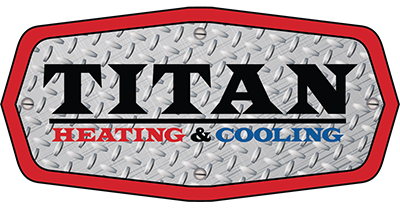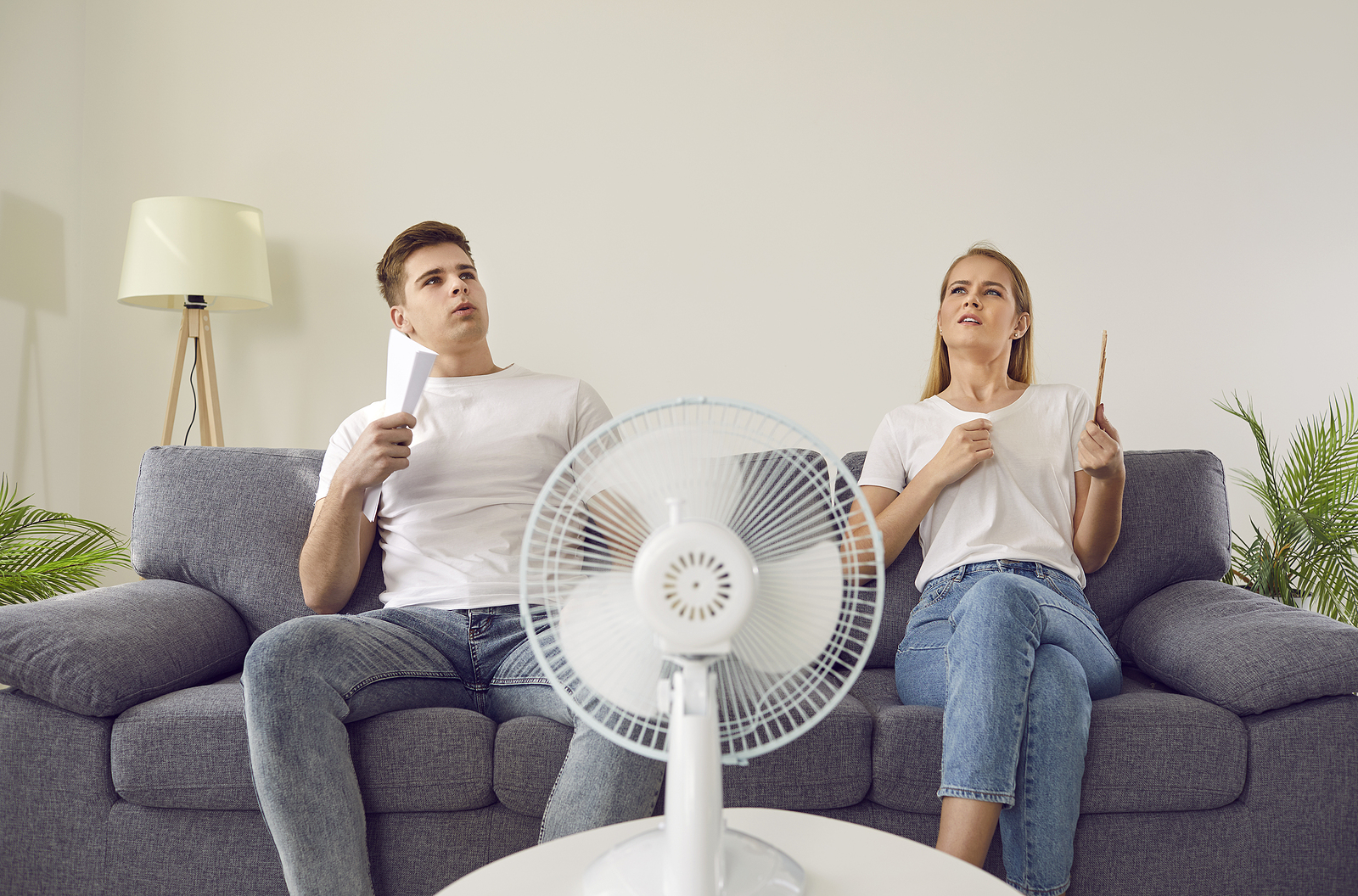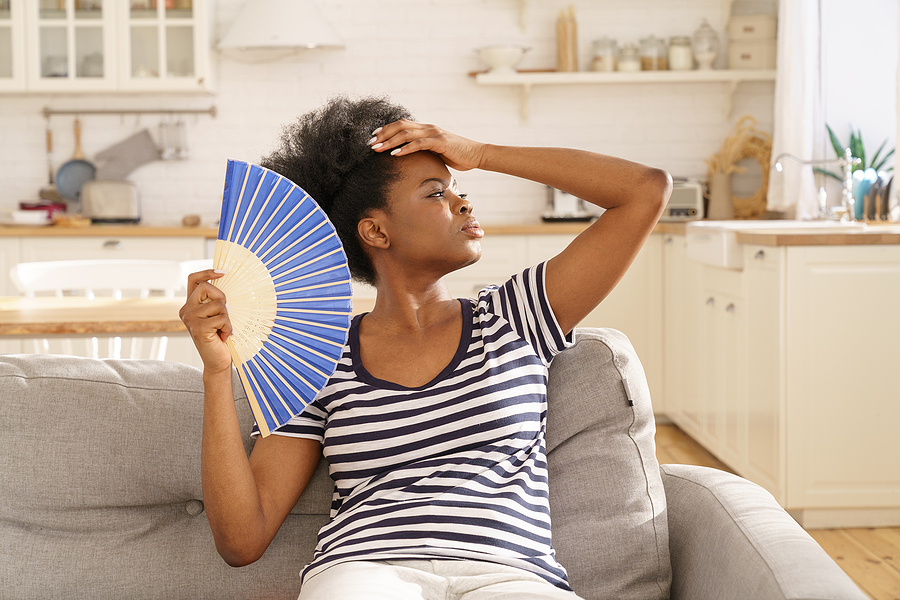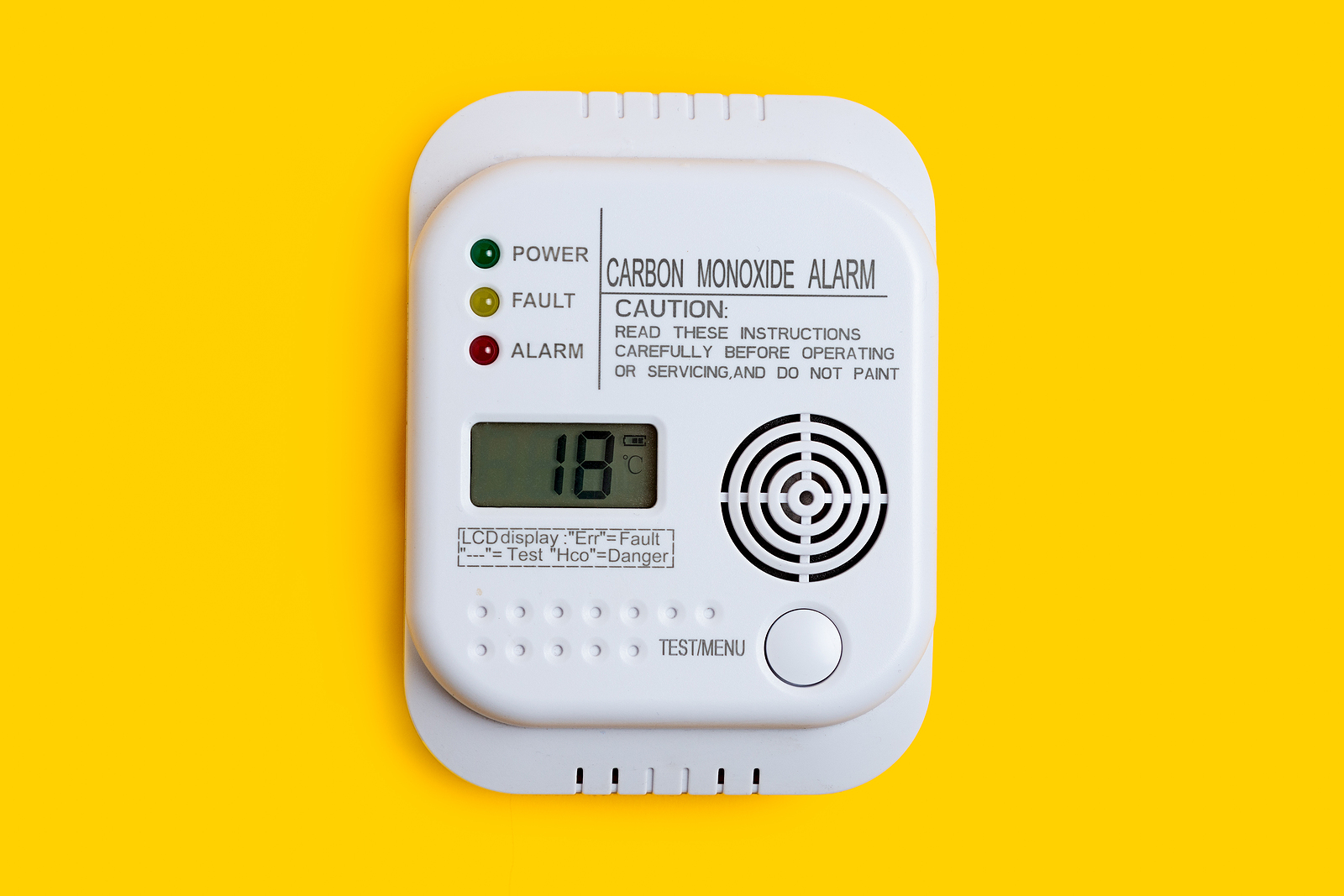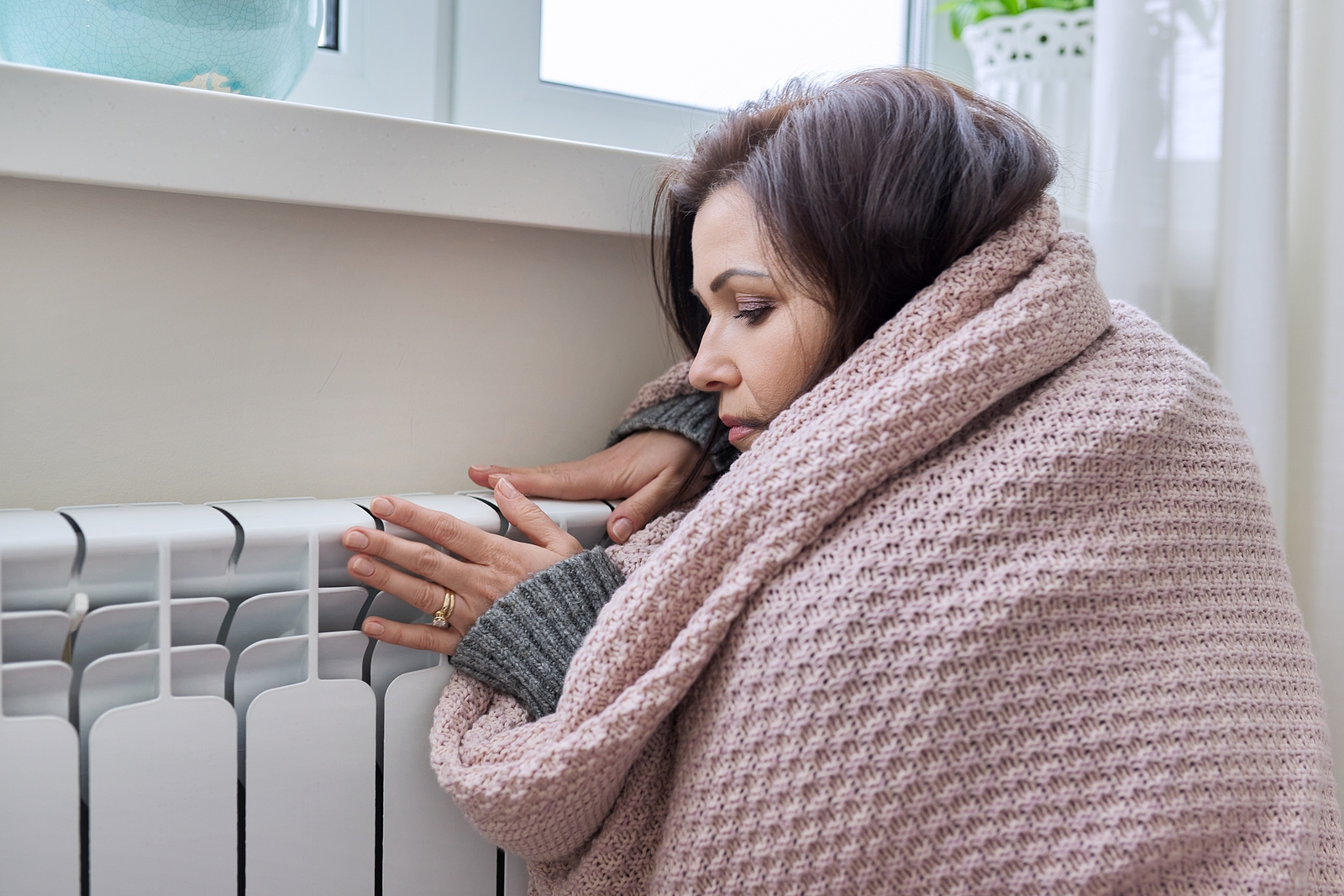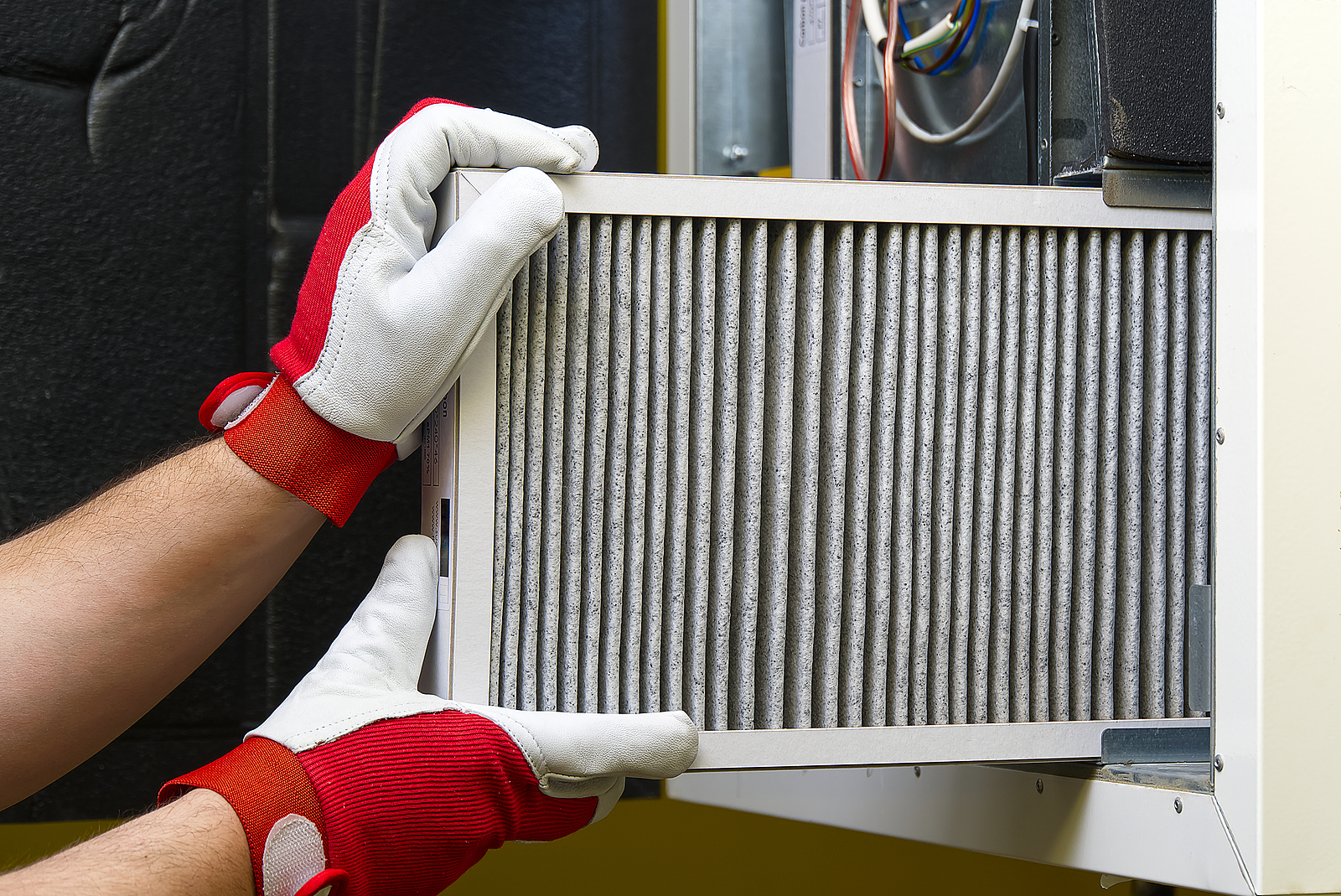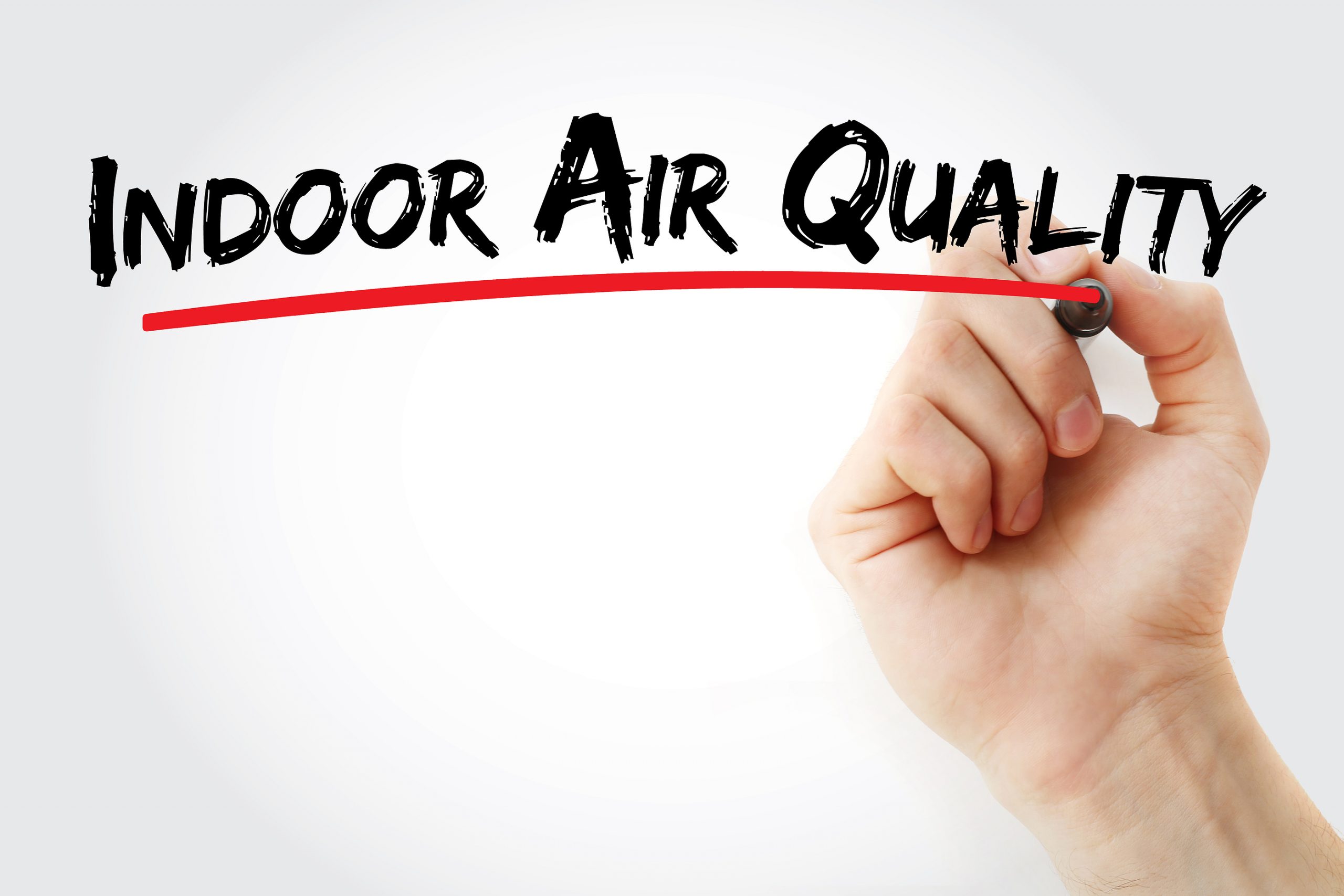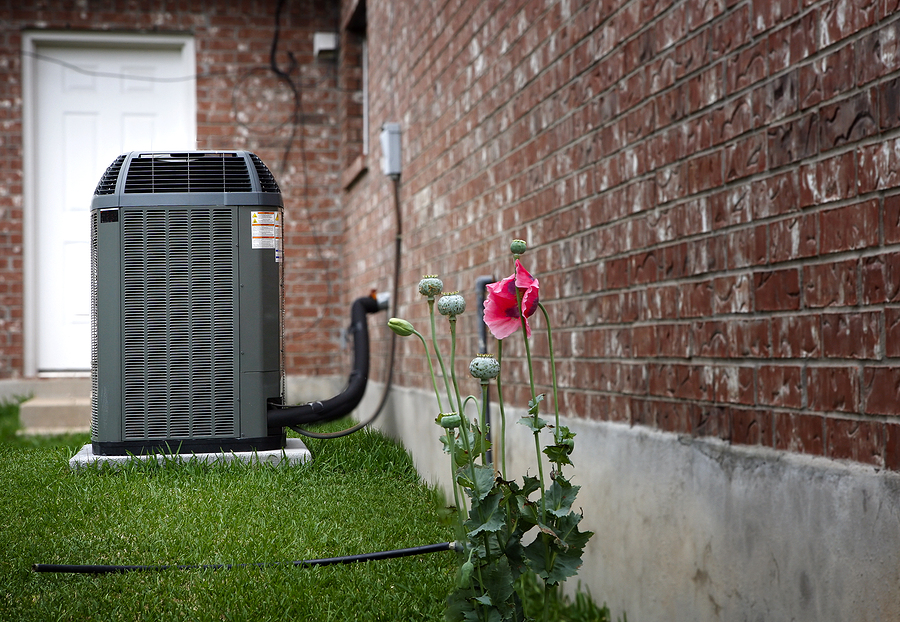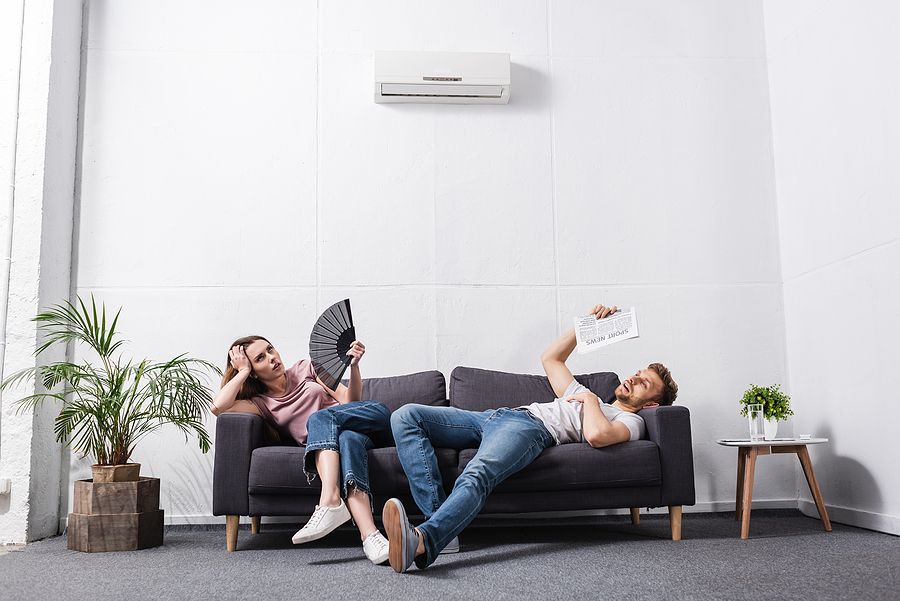We’ve all been there. You set the thermostat to a reasonable 78 degrees, but when you walk into that one particular room–whether it’s your guest room, your office, or if you’re really unlucky, your bedroom–it feels like a balmy 82. So rather than deal with this problem all summer long (like you did last summer…and the summer before that), you’ve decided to research the issue and find a solution. Good for you! You’ve come to the right place. As HVAC maintenance specialists, the crew at Titan Heating and Cooling has definitely heard this question before. And the answer isn’t always air conditioning repair services. In fact, there are several possible reasons why one room is hotter than the rest of the house. Below, we’ve listed five common culprits of a temperature imbalance and offered up a solution for each. Poor Insulation Aside from being hotter in the summertime, is the room in question always colder in winter? If the answer is yes, your problem might be poor insulation. When a room isn’t insulated well, more air is able to escape through the walls of your home, causing your heating and air conditioning systems to work overtime. That also means that in the winter, your heater is warming up icicles, and during the summer, the AC is cooling off your shrubbery. Not a pleasant thought. If you’ve lived at your residence for a while, it might be time to have a professional come conduct an inspection to find out if your home needs new insulation. When a room is properly insulated, it will hold its temperature much better. Windows There’s nothing better than a lovely view, and big windows through which you can appreciate it. But, if your windows are old or poorly sealed, they can easily let air escape from your home, changing the temperature in the room. Even if your windows are brand new, they can still cause issues. Statistically, windows are to blame for about 13% of air leakage in a home. There are a couple of solutions here. If your problem is that your windows are just old, you can have a professional come out and air seal your windows for you, or check out our blog on how to air seal your home yourself. If your windows are brand new, however, consider applying special temperature control window film to them. These films will help stabilize the temperature in that particular room by blocking UV rays from getting into the room and cool air from leaving it. Distance From the AC Is your extra-warm room far from the AC unit? It’s not unheard of for rooms that are farthest away from the AC to not get its full effects. There are a couple reasons for this. Your AC system could be too small for your home. Long runs of ducts might be poorly insulated, allowing cool air to escape before it reaches a particular room. Adding insulation to your ducts is a fairly simple fix. However, if it turns out that your AC is too small for your home, you may need to consider upgrading your air conditioning system. The skilled HVAC technicians at Titan would be able to determine the proper air conditioning unit for the size of your home. Obstructed Air Vents/Dirty Filters Though checking the air vents is probably the first thing you did when you noticed the different temperatures in your home, it’s still worth double checking. Are the vents open all the way? Is there any furniture in front of the air vent that may be blocking airflow? If you’ve checked off both of those boxes, then your problem might lie in the filter that sits directly behind the air vent. Did...
Read MoreAs temperatures rise, your first instinct may be to head for the thermostat. But overworking your air conditioner can be hard on your wallet. Additionally, it causes more wear and tear on your A/C unit, which may have you paying for A/C repair or replacement sooner than you’d like. Did you know that there are alternative ways to cool your home? Yep, that’s right. There are tons of cooling methods you can use, either without running your air conditioner, or in tandem with efficient A/C use. So, instead of overworking your A/C (and hiking up your energy bill in the process), consider some cost-efficient alternatives. Here are 11 home-cooling hacks that can keep you and your house cool this summer. Test drive a couple of these tips this summer to keep you and your family cool. Of course, no matter what home-cooling “hacks” you try, A/C use will be inevitable on some days. Check out our tips to make sure you’re using your A/C efficiently this summer. Install ceiling fans and run them counterclockwise. Let’s start with some classic advice: If you haven’t already, you need to install ceiling fans. Running them counterclockwise in the summer will help push cool air down instead of pulling it up. (Set them clockwise in the winter for the opposite effect.)Run bathroom and kitchen exhaust fans. Hot air tends to linger after you cook dinner or shower. Turn on the exhaust fans to suck all that hot air out of your home.Close your curtains during the day. This will block out some sunlight and reduce the heat that comes in through the windows. (Take down any dark, synthetic drapes you may have. Opt for cotton or sheer curtains instead for filtered light).Change out your light bulbs. Most people don’t realize that their incandescent bulbs emit heat. According to the Center for Sustainable Energy, incandescent bulbs waste 90% of the energy they use, which is given off as heat. Switch them out for fluorescent or LED bulbs, instead. Not only are these bulbs cooler, but they’re also more efficient. Use the ice “hack” on your portable fan. Fill a bowl with ice and place it on a table or other surface that’s level with your portable fan. Then, turn on the fan for a blast of icy breeze with a cooling mist. Use this method for instant relief from muggy summer days.Invest in a Chillow or DIY your own. What’s cooler than the other side of your pillowcase? How about a Chillow? A Chillow is a cooling pad that you can place over your pillow. It works wonders for hot sleepers. You can also DIY your own cooling pillow by filling up a small pillowcase with rice and sewing it shut. Store the rice pillow in the freezer during the day, and at night, sleep on it like a regular pillow. The rice will keep its cold temperature for a while, making for a cool night’s rest.Apply heat-reducing film to your windows. Block out anywhere from 70-90% of the heat coming in through your windows with reflective film. Not only do window films cut down on excessive heat, but they also stop some of the cold air that seeps in through windows in the winter. Install duct boosters. If you want to draw more cool air into certain rooms, give your air ducts a boost! A duct booster fan is a fan that fits inside an air duct and can be turned on to increase the airflow in a room. Try this out if you have certain rooms that just won’t cool down. Cross ventilate your home. Most people know to open...
Read MoreYour home’s indoor air plays an important role in the health of you and your family. Poor indoor air quality can contribute to health problems like asthma and allergies, and the effects of toxins like radon and carbon monoxide can be even more serious. Testing your indoor air quality is an important part of ensuring your home’s air is safe to breathe. Here’s what you need to know about indoor air pollutants, signs of poor air quality, how to maintain good indoor air quality, and how to test the air in your home. What Health Hazards Are Commonly Found in Indoor Air? Your home’s indoor air can be affected by pollutants coming from a number of sources — from the materials used in construction to carpet and furniture fabrics to mold and mildew due to poor ventilation. Some of the most common pollutants found in homes are: Mold and mildew: typically grow on surfaces due to ventilation issues or high indoor humidityRadon: an odorless, colorless gas and the second leading cause of lung cancer after smokingCarbon monoxide: another odorless, colorless gas that can be deadly if left uncheckedVolatile organic compounds (VOCs): emitted by building materials and household products; can exacerbate existing respiratory conditionsParticulate matter, including dust mites and other allergens: can cause shortness of breath, chest congestion, or wheezing, and are linked to increased risk of heart-related health issues When Should I Test My Air? Signs of Poor Indoor Air Quality For the most part, the Environmental Protection Agency (EPA) doesn’t recommend general indoor air quality testing, and there is no single test that can measure every aspect of the air quality in your home. However, there are specific tests for some pollutants, so it can be helpful to know the signs and symptoms to watch for to determine what tests you will need. Some indoor air pollutants cause obvious symptoms: for instance, nausea, confusion, dizziness, and headaches are often signs of dangerous levels of carbon monoxide in the home. And mold and mildew are typically easy to spot. Other pollutants may require a bit more observation to narrow down. Notice, for instance, if you start coughing when you enter a certain room or have health symptoms that disappear when you’re at the office or on vacation. Symptoms of allergens or other particulate matter in your air can include: CoughingWheezingShortness of breathScratchy throatWatery eyes Radon, one of the most dangerous substances that can affect your indoor air, causes no immediate symptoms at all — but long-term exposure can lead to serious health problems. This is why radon testing is often performed when a home is sold. If you bought your home many years ago, or a radon test wasn’t done when you bought it, it may be a good idea to have one done now. How To Test Your Indoor Air Quality Evaluate any symptoms you are experiencing, along with input from your doctor. Once you have things narrowed down, you can have your home tested for the pollutants you suspect may be an issue. Radon test kits can be purchased online or in many home improvement stores, or you can hire a professional to do it for you. To test for other pollutants, you’ll need to hire someone. To find reputable indoor air quality specialists, look to an organization like the Indoor Air Quality Association for a list of members. Or ask a local real estate agent or home inspector for a recommendation — both should have connections to air quality specialists in your area who can help with both testing and mitigation of pollutants. Ways To Improve Indoor Air Quality Beyond testing your indoor air quality, there are a few things you can do...
Read MoreThere’s nothing like coming home to a warm house after being out in the cold. But it’s hard to keep your home warm and comfortable if your HVAC system isn’t working properly. Luckily, many common winter HVAC problems can be prevented by learning more about them and implementing proper maintenance and care of your heating system. 1. Frozen Pipes Frozen pipes are a common problem when temperatures begin to drop. Cold weather can freeze water inside pipes and coils, causing hot water heaters and steam radiators to fail. Even worse, frozen water can expand inside pipes, causing them to burst from the pressure buildup. Properly insulating exposed pipes with foam insulation (especially those near external walls) and maintaining indoor temperatures above 55 degrees can help keep your pipes from freezing. 2. Uneven Heating If you notice that some rooms are colder than others, it could be a sign of something as simple as air leaks around windows and doors caused by insufficient insulation, cracks, or holes. Or it could be that your registers aren’t fully open (an easy thing to check if you are experiencing this issue). Alternatively, it could indicate a problem with your HVAC system. Uneven heating can be caused by a number of issues with your heating system, including a malfunctioning blower motor, a dirty air filter, or clogged ductwork. If you are experiencing uneven heating in your home, check your air filter and have your system inspected and your vents and ducts cleaned out properly. Learn more about Titan’s air duct cleaning services here. 3. Dirty HVAC Filter If your HVAC system uses a forced air furnace or heat pump, it’s vital to ensure your air filter stays clean to keep your system functioning properly and to prevent bigger issues with your heating system. Your air filter keeps dust out of your heating unit so it can run efficiently. As the air filter becomes clogged with dust, dirt, or debris, air can no longer flow freely through the unit. Blockages can lead to decreased air flow, requiring your HVAC system to work harder to keep your home warm. Get in the habit of checking your air filter monthly, replacing it as needed. During the heating season, you may need to change it as often as once a month; in warmer months you may be able to go as long as three months before replacing it. 4. Faulty Heat Pump If your system has an exterior heat pump, winter weather can damage it, leading to broken fan motors, coil blockages, and a failure to defrost. If the coils and fan are not kept clear of ice, your heat pump won’t function properly. Make sure your heat pump has automatic defrost settings to keep thick layers of ice from building up. 5. Broken Thermostat Your thermostat is what regulates your heating system. If it isn’t functioning properly, your HVAC system won’t work as well as it should. A faulty thermostat can result in a wide variety of HVAC issues, including irregular heat cycling, uneven heating, and more. Thermostat failure can be caused by faulty wiring or dying batteries. Or it may just need to be recalibrated. Older, worn out models may have run their course and need to be replaced. Replacing your old thermostat with a new programmable one will improve your energy efficiency, save on heating costs, and allow for more precise temperature control for improved comfort. Avoid These Common Winter HVAC Problems With Help From Titan To prevent these and other common winter HVAC problems, consider an HVAC maintenance plan from Titan. Routine HVAC maintenance can improve heating system efficiency, reduce operating costs, increase the lifespan of your equipment, and improve the quality of your indoor...
Read MoreHeating season can be tough on your HVAC system. If you don’t keep your heating and cooling system well-maintained, once you switch the heat on for the winter the wear and tear from previous years will quickly make itself known in the form of breakdowns and inefficient heating. Luckily, you can easily get ahead of common winter heating problems with some preventive HVAC maintenance. A little maintenance now can help extend the life of your heating and cooling system and save you money while ensuring a comfortable home all winter long. Make sure your heating system is ready to keep you warm this winter with these maintenance tips. 1. Replace the Air Filter A dirty air filter will make your furnace run harder than it should, driving up your energy bills and potentially damaging your HVAC system. It’s best to start the heating season with a clean filter, then change it regularly. Make sure to check your filter every month. Depending on the type of air filter you have, you may not need to replace it every time, but you should still be in the habit of checking it monthly. 2. Clean the Air Vents When you vacuum your home, make it a habit to vacuum out your air vents as well. This can help prevent blockages and maintain good indoor air quality. If you notice buildup in your vents that vacuuming doesn’t seem to take care of, it may be time to schedule a professional air duct cleaning. At Titan, we recommend cleaning your air ducts at least once every 2-3 years to allow your HVAC system to operate at its highest level of efficiency. 3. Check Your Thermostat Replace your thermostat’s batteries so it is ready to get you through the heating season. (While you’re at it, it’s a good idea to replace the batteries in your smoke and carbon monoxide detectors as well, especially if you haven’t done so in a while). And if you don’t yet have a programmable thermostat, now is the time to upgrade. Additionally, check to ensure your thermostat is programmed to meet your needs this winter. To save energy, set your thermostat to a cooler temperature at night and while you’re at work and a warmer temperature during the times you are home and awake. 4. Have Worn Parts Replaced It’s easier to fix potential problems now than when they become heating emergencies later this winter. To ensure your HVAC system is prepared to run smoothly all season, replace worn parts before they break. Ideally, you should have your heating system inspected each fall, where an HVAC professional will check for signs of wear or malfunction. This way you can have any problem parts replaced before they break or cause damage to other components of your system. 5. Cover Your Outdoor A/C Unit Your A/C unit may not be the first thing on your mind as temperatures get colder, but now is the time to ensure it is protected from damage over the winter. If your HVAC system has an outdoor A/C unit, be sure to cover it for the winter. This will protect it from ice, snow, and debris buildup and help prevent the need for extensive repairs before you turn your A/C on next summer. 6. Add Insulation While insulation may not seem to directly affect the performance of your heating and cooling system, it does play a key role in the overall energy efficiency of your home. If your home is lacking in insulation, your furnace will need to work harder to keep your home warm, and you’ll notice the effects of this in your heating bill. Check to ensure your attic has enough insulation, and add more as...
Read MoreThe filter in your heating and cooling system plays an important role in maintaining good indoor air quality in your home. It works to filter dust, pollen, and other small particles out of the air, creating cleaner, healthier air for you and your family to breathe. It also helps protect your HVAC system by keeping it free of larger particles that could damage it. This is why it is so important to make sure you are using the right type of air filter for your system, budget, and air quality needs, and that you make filter replacement part of your routine HVAC maintenance. There are 7 commonly used types of HVAC filters available for residential heating and cooling systems, but before we get to that, let’s talk a little bit about how those filters are rated. Rating the Different HVAC Filter Options: MERV Rating MERV stands for minimum efficiency reporting value. The MERV rating is a consumer standard developed by the American Society of Heating, Refrigerating, and Air Conditioning Engineers (ASHRAE). MERV measures a filter’s ability to capture particles as small as 0.3 microns to 10 microns. Ratings range from 1 to 20, with the ideal range for most homes between 8 and 13. The higher the MERV rating, the more effective a filter is. However, be aware that MERV ratings at the higher end of the spectrum can make it more difficult for your HVAC system to pull in air, forcing it to work harder (and potentially shortening its lifespan). Fiberglass Air Filters Fiberglass filters are made with strands of fiberglass spun together. They are the most commonly used and least expensive option on the market. They are highly effective at keeping large particles of dirt and debris out of your heating system. However, they are less effective at filtering dust and other small particles out of your air. Because of this, these filters aren’t a good option for those with allergies or respiratory problems. Fiberglass filters typically have a MERV rating of 4. Pleated Air Filters Pleated air filters are made of either polyester or cotton fabric that is folded to create pleats. They are slightly more expensive than fiberglass filters, but are more effective at filtering smaller particles like dust, pollen, mold spores, and pet dander. The increased surface area created by the fabric pleats allow for better filtration: The more pleats a filter has, the better it filters particles out of your home’s air. This type of filter can also help reduce the noise your HVAC fan makes. Pleated filters are available in either disposable or reusable options, and can be recycled as well. MERV ratings of pleated filters can range from 5 to 13. HEPA Filters High-efficiency particulate air filters, or HEPA filters, are the best option for people with allergies and respiratory issues. This type of filter does an excellent job of cleaning your home’s air. In fact, they are effective at screening out up to 99.97% of contaminants, including dust, pollen, mold, pet dander, viruses, bacteria, cigarette smoke, and other irritants. While HEPA filters are a heftier investment up front, they are longer lasting than other air filters, making them more cost effective in the long run. HEPA filters are usually rated 11 or higher on the MERV scale. Washable Air Filters Washable air filters can be cleaned and reused as needed, rather than thrown out and replaced. They cost more initially, but save you money over the long term because you don’t have to replace them. If you use washable filters, it is crucial to maintain them properly. For instance, be sure to let them dry completely before putting them back into your HVAC system, as even a small amount of moisture left...
Read MoreManaging the humidity level in your home is an under-discussed facet of maintaining good indoor air quality. When the humidity in your home is either too high or too low, it can degrade the quality of your air, leading to damage to your home and your belongings as well as negative health effects for you and your family. Humidity control through the use of a humidifier or dehumidifier helps balance your home’s humidity levels for better indoor air quality. Ideal Indoor Humidity Levels Humidity is the amount of water vapor in the air. Relative humidity is the percentage of water vapor in the air at a given temperature compared with the maximum amount of water vapor the air can hold at that temperature. When we talk about indoor humidity levels, we are using a measure of relative humidity. Ideally, humidity levels in your home should be between 35 and 60%. This is the sweet spot for comfort level as well as for healthy indoor air quality. Outside of this range, your home will feel less comfortable and you will begin to notice the effects of poor indoor air quality on your health. How Does Humidity Affect Air Quality? Humidity levels affect how warm or cool your home feels. In the winter, when the air dries out due to drier outdoor air and running your heating system, low humidity can make your home feel colder, even when your thermostat is set at an otherwise comfortable temperature. The higher the moisture content in the air, the warmer your home will feel. Additionally, bacteria and viruses that cause respiratory illnesses thrive in environments with significantly high or low humidity levels. High humidity can also increase the prevalence of mold, dust mites, and other allergens in your home. These things can have a significant impact on your home’s air quality and your family’s health and wellbeing. Health Effects of Low and High Humidity Both extremely low and extremely high indoor humidity can negatively affect your health. Low Humidity When your home’s humidity levels are balanced, moisture in the air weighs down particles of bacteria, viruses, and other pollutants, causing them to fall. But when humidity in your home is low, the drier air allows these particles to move more freely throughout your space. The less moisture there is in the air, the more freely the particles can circulate. Low humidity can cause: Dry skin, rashes, and infectionsChapped lipsItchy eyes and noseDry sinuses and throatDry coughNosebleedsWorsened asthma symptomsand more In addition, dry mucous membranes in the sinuses can make it more difficult for your body to fight off the germs that cause colds, flu, and other respiratory illnesses. Improving your indoor air quality by balancing your home’s humidity levels can help control the spread of infectious diseases. High Humidity On the other end of the spectrum, high indoor humidity can also cause negative health issues, such as: Growth of mold and mildewIncreased prevalence of dust mitesSinus stuffinessDifficulty breathingHeadachesEye irritationSkin irritationAggravated asthma symptoms In addition, high humidity can make warm temperatures feel even warmer, leading to heat-related illnesses like heat rash, heat exhaustion, or even heat stroke. Benefits of Home Humidity Control Luckily, the majority of adverse health effects caused by extreme levels of humidity can be minimized through humidity control. When your home’s humidity levels are kept within the ideal range, you will experience: Healthier skinA more comfortable sleeping environmentReduction in dry, scratchy throat, eyes, and sinusesImproved asthma symptomsReduced risk of airborne illness transmissionAnd many more health and wellness benefits Controlling the humidity in your home is as simple as installing a humidifier or dehumidifier, depending on your needs. At Titan, we install Aprilaire whole-house humidifiers and Ultra-Aire whole-house or free-standing dehumidifiers. Installing a whole-house humidifier or dehumidifier...
Read MoreWhen your A/C breaks down, you’re stuck in a hot, sticky home until you get it back up and running again. And in addition to that physical discomfort, it can be difficult to know whether to have repairs done or to bite the bullet and buy a brand new system. There are many factors to consider, including the age of your system, frequency of repairs, and how efficiently it runs. To help you sift through these factors, let’s take a look at some of the pros and cons of repairing or replacing your air conditioning unit. Consider the Age of Your A/C Unit When Evaluating Whether Repairing or Replacing Your Air Conditioning Unit When determining whether to repair or replace your A/C unit, consider its age. If it is less than 10-12 years old, it’s generally worth repairing, unless it has a major issue that needs fixing (such as a failing compressor or condenser). If it’s older than that, it might be time to consider an air conditioner replacement, especially if repairs are becoming frequent. However, it’s not always that clear cut. An older system could still have a lot of life left in it if you have kept up on routine maintenance. Regardless of age, if your A/C unit isn’t running properly, contact an air conditioning repair company like Titan to inspect it and help you determine if repair or replacement is the best option. Compare the Cost of Repairs vs Replacement An individual A/C repair almost always costs less than replacing your unit. But in many cases, installing a new unit could be more cost-effective for the long term. If needed repairs come out to be 40% or more of the cost of a new system, replacing your air conditioner will be a better long-term investment. And if your A/C unit constantly breaks down, that’s a good sign that it's time for a replacement. SEER Rating: How Efficient is Your A/C Unit? Another factor to consider when deciding between air conditioning repair or replacement is the efficiency of your current system. If your A/C unit runs inefficiently — it runs constantly, doesn’t cool adequately, or causes increasingly high energy bills — you could save money in the long run by replacing it with a newer, more efficient model. One factor to consider as you make that decision is the Seasonal Energy Efficiency Ratio (SEER) rating of your unit. The SEER rating measures the A/C unit’s total cooling output over a season against the total energy consumed during a season. This can help you compare the operating costs of your old system vs new air conditioner models. Today’s A/C units have a minimum SEER rating of 13, whereas older units generally have a much lower rating, often in the range of 8-10 SEER. For each SEER rating increase, you save about 7% on your energy bill. For example: if you have an old 1980s A/C unit with a 9-10 SEER rating, you could save 21-28% on your energy bills by replacing it with a new unit rated at 13 SEER. And if you upgrade further to a 15-16 SEER unit, you could save even more — as much as 42-49%! As you can see, replacing your old system with a new, more efficient model can mean big savings. Titan’s Financing Options for Replacing Your Air Conditioning Unit At Titan, we understand that even with significant savings in the long run, replacing your air conditioner can feel like a hefty investment. That’s why we offer financing options to help make your air conditioner replacement costs less burdensome. We offer convenient monthly payment options, competitive interest rates, deferred interest, and more....
Read MoreBelieve it or not, summer is right around the corner. Sunshine, blue skies, and warm weather are just weeks away! As exciting as that is, once it starts to warm up out there, you’ll want to make sure your air conditioning unit is ready to keep your home cool and comfortable. Take a few steps now to make sure your air conditioner is in tip top shape so that when those warm temperatures hit, you can simply flip the switch for cooler indoor air. Follow these 9 steps before turning on your air conditioner this year. 1. Inspect Air Vents and Ductwork Move items that are on or near air vents that could block the flow of air, such as furniture or drapes. Take a peek inside the grate to check for any items that have fallen through. Lift up the grate to remove items if needed. Check exposed ductwork for wear and tear. A few common issues to look for are: Gaps between duct sectionsFallen duct sectionsDisconnected jointsTears in flexible duct sections Seal up any problem areas, and contact a professional to make the necessary repairs. Worn ducts can be a major source of cooling loss and system inefficiency, leading to less efficient cooling, higher energy bills, and future air conditioning repairs. 2. Change Air Filter Your HVAC air filter traps contaminants that your system removes from the air as it runs. Once your filter becomes too full, it can no longer trap these contaminants, and excess dust and debris settle within your HVAC system. This in turn contributes to malfunctions or even breakdowns. To prevent this and maintain good air flow throughout your system, your air filter should be changed every 2-3 months or so. You should change the filter more often if you have indoor pets or family members with asthma or allergies. It’s a good idea to get in the habit of checking your air filter every month and changing it when it appears clogged. 3. Check Drain Line Your system should have a drain by the indoor cooling coil (often mounted above the furnace). The drain line can become clogged with dirt buildup as the system runs. If that happens, water could back up in the drain pan, potentially resulting in water damage to your home. You can flush the drain using bleach and water (one cup of bleach to one gallon of water), or have a professional clean it out for you. 4. Upgrade Your Thermostat If your thermostat is outdated, consider installing a new programmable or smart thermostat to save both energy and money. Replacing an old, inefficient thermostat with a new one can result in more even temperature regulation throughout your home. A new programmable or smart thermostat will be more efficient and better able to respond to changes in outdoor temperatures. 5. Inspect the Outdoor Condenser Unit Check the panels that encase your unit’s electrical connections, and call for repair if any are missing or misaligned. Harsh winter weather and storms with high winds can damage these panels or knock them loose. Running your air conditioner with missing or damaged panels can pose a major safety risk. 6. Clear Away Debris and Trim Landscaping Around Exterior Unit Leaves, twigs, grass clippings, or other debris can block the components of your outdoor A/C unit, resulting in reduced performance. Clean the area surrounding the unit, removing any blockages. Use a light spray of water to rinse away built-up dirt, pollen, and grime. Keeping your air conditioner and the area around it clean and free of obstacles will help promote good air flow and maximum cooling efficiency. 7. Check Insulation on Refrigerant Lines Your outdoor unit has coolant lines that run to...
Read More- 1
- 2

